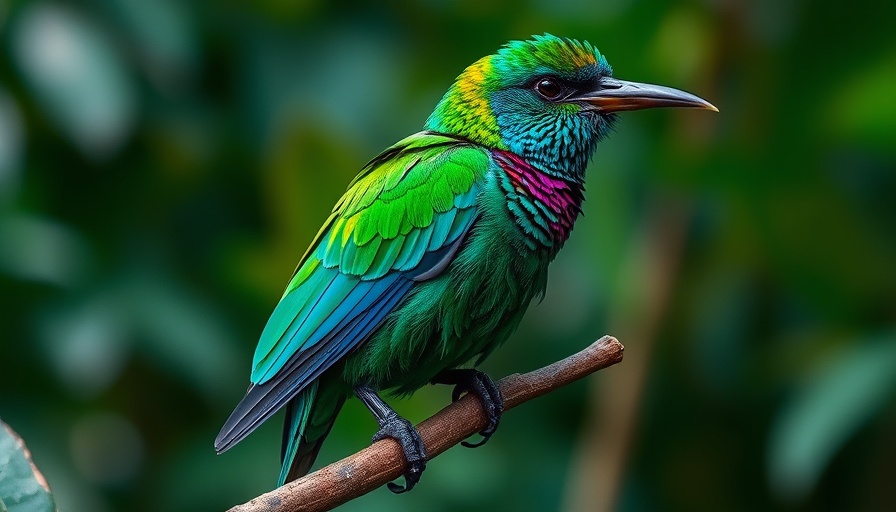
A Lost Wonder Returns: The Santa Marta Sabrewing
In April 2022, the snowy peaks of the Sierra Nevada de Santa Marta in Colombia became the site of an extraordinary ornithological discovery. The Santa Marta Sabrewing, a hummingbird species that had not been seen for over a decade, was spotted again by researcher Yurgen Vega. This rare bird, known for its vibrant, emerald green feathers and striking blue throat, is an emblem of resilience within avian biodiversity.
The Story of Rediscovery
First described in 1946, the Santa Marta Sabrewing eluded birdwatchers for many years, falling into the category of over 150 species considered "lost"—not yet extinct, but missing. Its last confirmed sighting was in 2010, which added to the looming question: had deforestation and habitat destruction pushed this beautiful creature to oblivion? The answer remained, heartbreakingly, elusive until Vega's fortuitous encounter brought hope back into the ongoing efforts of ornithologists and conservationists.
The Importance of Habitat Preservation
This rediscovery underscores a critical truth: preserving habitats is not merely about saving birds—it's about saving entire ecosystems and the myriad species that call them home. The forests of the Sierra Nevada de Santa Marta, where the Sabrewing was found, have dramatically shrunk due to agriculture and deforestation, making the work of conservationists even more vital. Biologists now face the urgent task of mapping and understanding the population dynamics of the Santa Marta Sabrewing, with an aim to ensure its protection.
Hope for the Future
The reappearance of the Santa Marta Sabrewing serves as a beacon of optimism in the face of declining bird populations globally. As researchers expand their efforts to find other “lost” species, the unyielding persistence of nature shines through. This newfound visibility for the Santa Marta Sabrewing reignites discussions surrounding biodiversity, conservation practices, and the importance of protecting endangered habitats.
As we reflect on this remarkable story, let it prompt action—whether it’s supporting conservation initiatives or further educating ourselves about the diverse avian species inhabiting our planet. Every effort counts in preserving the melodies of our ecosystems.
 Add Row
Add Row  Add
Add 




Write A Comment